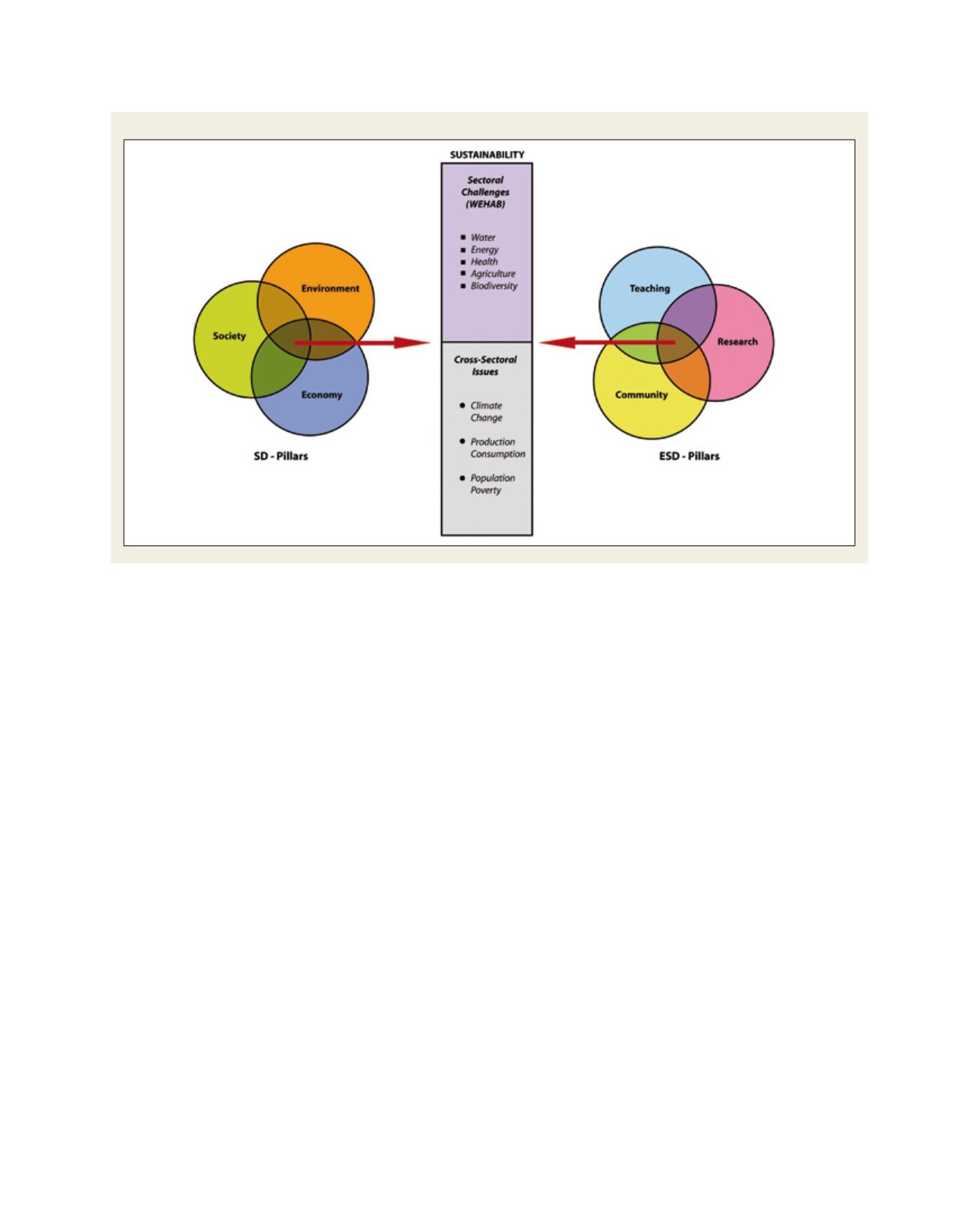

[
] 107
emotive power of humanities can cut across disciplines,
sectors and borders, bringing meaning and purpose to
daily life. For example, USM’s Going Bananas project
has brought together researchers from the School of Art
and scientists from the School of Industrial Technology
to train village communities in Balik Pulau, Malaysia to
make handmade paper from banana trees. The paper is
of print quality and is also used for making handicrafts
such as lampshades, boxes and lanterns. This income-
generating project is popular with unemployed young
people and women in the village.
USM community partnership programmes
Examples of these programmes include the recent forma-
tion of Innovation XChange (IXC Malaysia Berhad) to
facilitate the exchange of information between USM
researchers and industry players; sains@usm, a nexus
where science, technology, arts, academia and busi-
ness intersect to produce innovative solutions to
socio-economic challenges; and the Malaysian Citizen’s
Initiative, a school-based community sustainability
programme in which high school students are trained
to work with their communities to identify and address
sustainability issues through participatory approaches.
About 5,000 students from nearly 50 Malaysian schools
have undergone this training so far. Finally, the Taiping
Peace Garden Project promotes peace and harmony in
Taiping, Malaysia, a city with a history of communal
problems and the Mindanao Peace Programme aims
to resolve the conflict in Mindanao, Philippines, by
to extend this to all buildings on campus. At USM’s new engineering
campus, bicycle use is promoted. USMhas delineated green space areas
in its main campus that will be protected from building or develop-
ment projects. Lastly, polystyrene containers are banned on campus,
and students are supplied with biodegradable containers free of charge.
Healthy Campus
The Kampus Sejahtera (Healthy Campus) programme emerged in
2000 from the realization that students’ ability to learn depends on
their health and quality of life. The indigenous word
sejahtera
cuts
across spiritual, social, physical, mental and environmental dimen-
sions. The USM Clinic, (USM Sejahtera Centre) along with volunteer
students, runs annual anti-obesity and anti-tobacco clinics, recycling
initiatives and activities for ‘differently-abled’ students. USM facilities
feature user-friendly ramps, shortcut passages, parking spaces and
toilets for physically challenged students and staff.
6
An innovation of
international significance in the area of health is the ‘typhidot: rapid
diagnostic test-kit’ which has reduced typhoid detection time from
the usual two to five days to just under one hour. This kit, developed
by USM’s Institute for Research in Molecular Medicine, is marketed
to about 18 countries around the world.
A transdisciplinary approach
USM has adopted a cluster approach to addressing sustainability
issues, striving to strike a balance between science and technology,
social sciences and humanities, especially in research. Humanities
such as art, literature, culture, language, history and philosophy are
playing an increasingly important role in promoting sustainability.
‘Art therapy’ is an area of multi-disciplinary research at USM that
involves the School of Arts and the School of Medical Sciences. The
Source: Centre for Global Sustainability Studies, USM
















